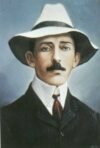Pilot Video 1 – With Questions
Além do vocabulário específico sobre a aeronave, também é muito importante o conhecimento de termos específicos utilizados na aviação para denominar as diferentes àreas do Aeroporto.
Teste agora o seu vocabulário! Assista ao vídeo e responda às perguntas abaixo, tirando suas dúvidas consultando as respostas dadas:
Perguntas:
1. At what height was the plane when it lost control?
2. How many people were killed in the incident?
3. What was recorded in the black box, just before the sound of a blast was heard onboard and after which theaircraft lost control?
4. What was the airplane type?
Perguntas:
1. At what height was the plane when it lost control?
2. How many people were killed in the incident?
3. What was recorded in the black box, just before the sound of a blast was heard onboard and after which theaircraft lost control?
4. What was the airplane type?
5. What happened when the pilots decided to extend the landing gears?
6. What was the flight attendant doing when the aircraft was jolted by sudden turbulence?
7. What was the call sign for the flight, which was destroyed?
8. On what mountain did the airplane crash?
9. Where did the accident take place in relation to Tokyo?
10. Was there any eye witness of the incident? If yes, give some details.
Respostas:
1. The plane was at 7300 feet.
2. 500 people were killed in the incident.
3. One of the passengers was asking to use the bathroom, and the pilot gave permission to him.
4. The airplane was a Jumbo 747.
5. The airplane started to change its direction and started dipping.
6. The flight attendant was telling everybody to be calm and quiet.
7. The call sign for the destroyed flight was JAPAN AIR 123.
8. The airplane collided on the slopes of Mt. Fuji.
9. The accident happened 100 kilometers West to Tokyo.
10. American Airlines airplane’s pilot was the witness of the accident and he saw a ball of flames on the slopes of Mt. Fuji.















